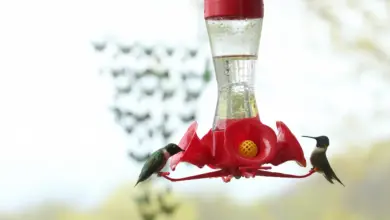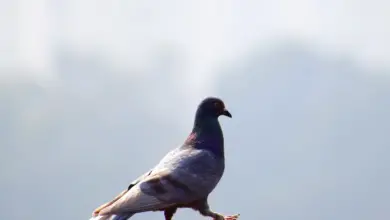Red Factor Canary or Red Canary
The Red Factor canary has been bred for its red plumage (“Colorbred”). The Red Factor Canary was developed by Dr. Hans Duncker (a German Breeder) in the early 1900s by crossing a male red siskin with yellow canary. Some say the yellow canary was a German Roller, while others believe that its ancestor is a Border Canary.
This canary has a plumage that ranges from a very deep orange (almost red), copper, apricot, pink, and red-bronze.
Special Care Requirement of the Red Factor Canary:
In order to maintain their rich red plumage, red-factor canaries must be fed foods rich in beta-carotene, or a supplement of half pure beta-carotene and half pure canthaxanthin to maintain their best color. However, color feeding is really only required when new feathers are growing in, and this usually occurs when birds are molting.
Commercially bought color supplements are available; however, they can be harmful to the birds’ health. A more natural feeding protocol that includes fresh grated carrots and chopped broccoli (or any other fruit / vegetable rich in beta-carotene) is equally effective and healthier. Results of the color feedings vary – depending on how much each individual bird eats. However, it should make a large difference compared to not “color feeding” at all, which will basically yield a yellow canary after the molt is completed.
Other than the color feeding requirement before molting (provided you want to maintain the red color in your canary), the care is identical to that of other canaries.
Note: Some of the images below are courtesy of Laurie Lane. (Please follow the link to see her canary photo gallery)
Methods for Healthy Color Feeding:
- Natural Color-feeding: Beta-Carotene is one of the mainstays for Red Factor color feeding. Carotenoids are found in berries, beets, sweet potatoes, squashes, tomatoes, cherries and grated carrots.. The natural way of color feeding is preferable.
- The Chemical Route: There are three main chemicals used in color feeding Red Factor Color Bred Canaries:Canthaxanthin, Beta-Carotene, and other orange carotenoids. Canthaxanthin is the most powerful color promoting substance. Some breeders use Canthaxanthin as the sole chemical for color feeding. This is not the best course to take. Birds fed only Canthaxanthin will develop a dull brick shade of red. The proper ratio is to give the birds half Canthaxanthin and half Beta-Carotene. This way the birds will develop bright, fire engine red feathers. These concentrates should be constantly available in the water. The proper amount to give is one teaspoon of the blend to one-half gallon of water. About one weeks worth of water can be mixed up at a time. Refrigerate the unused portion.
- Canthaxanthin and Beta-Carotene can also be fed in the nestling food. Mix one teaspoon of the mix of Canthaxanthin and Beta-Carotene with one kilo of dry ingredients. When buying Canthaxanthin and Beta-Carotene demand pure ingredients. Sucrose, dextrose, and other sugars, vitamin C, and vitamin B are added only because they are cheap. They do not improve color. Buy only from a vendor that has a high turnover and refrigerates the product until the time of shipment.
- Adult canaries should be color fed at all times. If the birds are not provided with a constant source of pigments, when losing an odd feather, it will grow in a different shade.
- Molting: Since molting can be stressful and uncomfortable, some birds experience a decrease in appetite. However, an increase in metabolism to accommodate the production of several thousand new feathers can cause an increase in appetite. Whether they lose their appetite or eat more during the molt probably depends on their comfort level. Molting birds benefit from more quality protein in the diet which can be provided in the form of well done eggs, well cooked meats and seafood, as well as cooked beans and rice, which together form a complete protein. Additional protein and good fats are needed to create strong and lustrous feathers. This is a good time to grind and sprinkle flax seeds over the birds’ food. Hemp seeds also provide beneficial oils and the essential fatty acids (EFAs) necessary to produce quality feathers. (*Hemp seeds are often referred to as “super-seeds” as they offer a complete amino acid profile, have an ideal balance of omega 3 and 6 fatty acids (Ref. GreenAndHealthy.info), and provide an impressive amount of trace minerals – they also have the highest concentration of protein in the plant kingdom.)
Related Web Resources: Canary Information: General Care and Housing … Canary Species / Breeds … Canary Varieties …. Guidelines for Buying Your Canary
Canary Breeding … Sexing Canaries … Canary Nutrition / Diet … Canary Diseases





